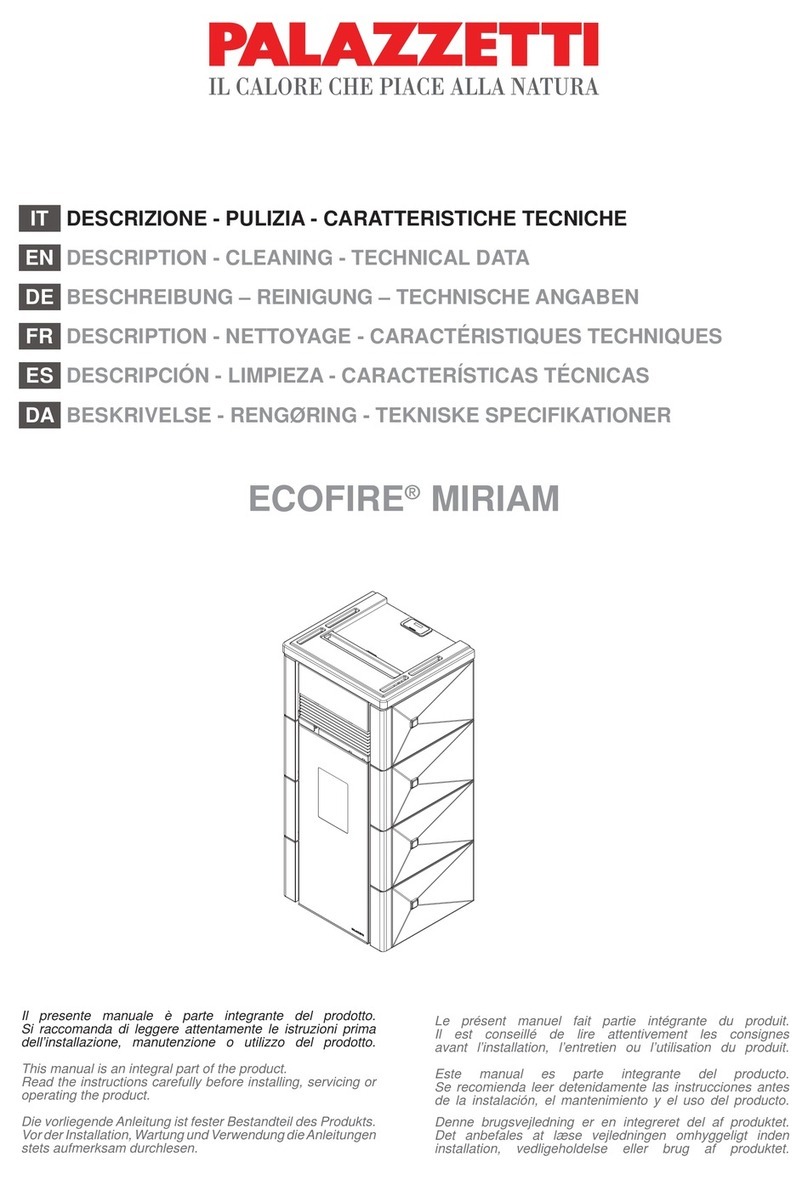Page 3
Table Of Contents
I. Installation and Operation Manual ................................................... 4
1. Preamble: Instructions for Safe Installation and Operation ................................................... 4
2. Clearance to Combustible Walls ................................................................................................ 5
2.1 Non-Combustible Floor Protector .................................................................................... 5
2.2 Free Standing Stove .......................................................................................................... 6
2.3 Free Standing Installed in an Alcove ................................................................................ 6
2.4 Insert Installed in an Alcove ............................................................................................. 6
2.5. Insert Installed in a Masonry/Factory Built Fireplace ..................................................... 6
2.6 Other Clearances and Recommendations ......................................................................... 6
3. Electrical Requirements ............................................................................................................. 7
4. Fuel Requirements ...................................................................................................................... 8
5. Venting System ............................................................................................................................ 8
5.1 Exhaust Vent Pipe Requirements ..................................................................................... 8
5.2 Exhaust Vent Termination Requirements ......................................................................... 9
5.3 Combustion Air Intake Requirements ............................................................................ 10
6. Location of the Heater .............................................................................................................. 11
7. Typical Installation Configurations .........................................................................................11
8. KOZIKOZI
KOZIKOZI
KOZI BayWin ® Pellet Insert Additional Considerations .................................................. 13
8.1 KOZI BayWin® Pellet Insert Additional Requirements .............................................. 13
8.2 Surround Assembly ........................................................................................................ 14
8.3 KOZI BayWin® Pellet Insert Installation .................................................................... 14
8.4 KOZI BayWin® Pellet Insert Removal ....................................................................... 15
8.5 Operation and Maintenance ............................................................................................ 15
9. Mobile Home Additional Installation Requirements ............................................................. 15
9.1 Combustion Air Intake Requirements ............................................................................ 15
9.2 Exhaust Vent Requirements ........................................................................................... 16
9.3 Other Installation Requirements ..................................................................................... 16
9.4 Typical Mobile Home Installation Configuration ........................................................... 16
9.5 Recommendations for Mobile Home Installation ........................................................... 17
II. Understanding Your Pellet Burning Heater ................................. 18
1. Component Description ............................................................................................................ 18
1.1 General Overview ...........................................................................................................18
1.2 Exhaust Fan .................................................................................................................... 18
1.3 Burn Pot .......................................................................................................................... 18
1.4 Circulation Fan ............................................................................................................... 18
1.5 Trouble Shooting Module Status Lights ......................................................................... 19
1.6 Auger Cycle Timer ......................................................................................................... 19
1.7 High Temperature Manual Reset Thermal Disk ............................................................. 19
1.8 Pressure Switch ............................................................................................................... 19
2. Heater Operation ...................................................................................................................... 19
2.1 Circulation Fan Speed Control ....................................................................................... 20
2.2 Start Button ..................................................................................................................... 20
2.3 Feed Control ................................................................................................................... 20
2.4 Damper Control .............................................................................................................. 20
2.5 Starting (lighting) your Heater for the First Time ........................................................... 20
2.6 Starting (lighting) your Heater ........................................................................................ 21
2.7 Stopping your Heater ...................................................................................................... 22
2.8 Adjusting your Heater ..................................................................................................... 22
III. Maintenance ................................................................................... 22
IV. Trouble Shooting Guide ................................................................ 25
V. Diagrams and Parts List ................................................................. 27
1. KOZIKOZI
KOZIKOZI
KOZI BayWin® Circuit Diagram ......................................................................................... 27
2. Stove Cross Section ................................................................................................................... 28
3. Equipment Compartment ......................................................................................................... 29
4. Parts List .................................................................................................................................... 30
5. Accessories List ......................................................................................................................... 31
VI. Warranty ......................................................................................... 31




























